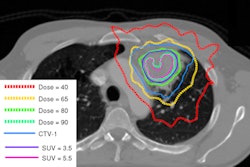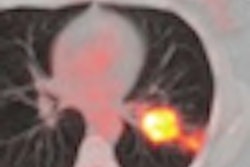German researchers have developed a virtual fly-through 3D FDG-PET/CT bronchoscopy technique that achieves high diagnostic accuracy for detecting regional lymph node metastases in patients with non-small cell lung cancer (NSCLC), according to a study in the October issue of the Journal of Nuclear Medicine.
Researchers conducted whole-body FDG-PET/CT scans on 61 consecutive NSCLC patients. From the data collected, virtual FDG-PET/CT bronchoscopies were reconstructed and diagnostic accuracy of detecting regional lymph node metastases was evaluated using the FDG-PET/CT scans as a standard of reference.
Virtual fly-through bronchoscopy achieved a diagnostic accuracy of 81% for detecting the lymph node metastases. In addition, the mean duration from the start of the virtual FDG-PET/CT bronchoscopy until image display was 22 seconds, and the mean smallest diameter of accessible bronchi was 3 mm (JNM, October 2011, Vol. 52:10, pp. 1520-1525).
The differences in the maximum standardized uptake value (SUVmax), SUVmean, short-axis diameter, and distance to the airways among both true- and false-positive and true- and false-negative lymph nodes also were statistically significant.
The lead author of the study was Dr. Michael Herbrik from the departments of diagnostic and interventional radiology and neuroradiology at University Hospital Essen at the University of Duisburg-Essen.




















